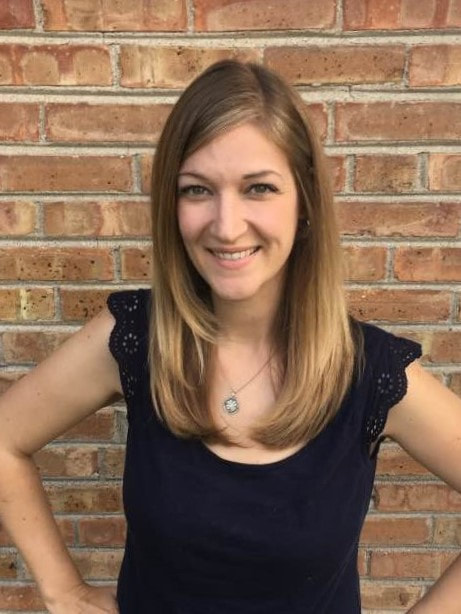|
Most of the links on this post are informational, but a few are affiliate links to help maintain this website.
Nourish, Heal, Thrive: A Comprehensive & Holistic Approach to Living with Lyme Disease is a complete nutrition guide to your Lyme journey. I knew I was going to relate to the text when I saw the opening quote: "You never know how strong you are until being strong is your only choice." - Unknown The author of the book, Rika Keck, is a certified in Applied Clinical Nutrition, Metabolic Typing Advisor, and Functional Diagnostic Nutrition. She founded a company called NY Integrated Health LLC located in New York City. According to her website: "It is her belief that eating well, taking responsibility for healthier lifestyle choices, feeling well, looking great and operating from inner balance can result in motivation, empowerment and achievement of long-term goals." The Introduction to Nourish, Heal, Thrive discusses how patients with chronic Lyme disease struggle to get a diagnosis and the challenge of getting proper treatment. "One patient suffering from chronic Lyme expressed that she felt she was becoming a shadow of herself and that she was slowly dying." Most people who have been through this experience can relate to the sentiment, but the goal of the book is to help you find hope through diet and lifestyle changes. Rika's philosophy is to remain neutral about medical treatments, such as, antibiotics vs. herbs, because the choice belongs to the patient. She says, "My intention is not to tell you how to treat or cure your chronic Lyme and the coinfections. Instead, this book is geared toward building resilience so you can tolerate your medical and alternative therapeutic protocols for your sickness." Early in the book Rika writes, "There is no such thing as a perfect diet. We are all different." The rest of the book details how to find the right diet and detox program for the reader. Each chapter has a different topic related to mind, body, spirit healing, such as "Eat for Energy" and "Action Steps to Optimize Digestion and Absorption." I found the chapter on the landscape of persistent Lyme to be very interesting. One of my favorite quotes was, "Being in balance, with acute stress followed by rest, is called healthy stress adaptation." It's a good reminder that following emotional or physical stress we must rest in order to integrate challenges into our body in a healthy way. In this chapter Rika provides a detailed "Toxic Exposures Checklist," which was helpful; however, there were some "toxic exposures" that I was not familiar with and would've liked a more detailed explanation, such as "surgical scars on the body" and "drink iced drinks or cold water with meals." There was also a valuable chapter about blood sugar issues and hypoglycemia, which I think could be discussed more in the Lyme medical community. Rika's writing style is pleasant and friendly, making this an easy read. The knowledge in the book is a lot to digest and spans the basics through advanced nutrition. This book is probably not for people who have their PHD in Lyme treatment. I would recommend it for those with a more recent diagnosis and needing some comprehensive knowledge on how to nourish, heal, and thrive. "Don't be afraid to give up the good to go for the great." - John D. Rockefeller
0 Comments
This article was first published on ProHealth on February 18th, 2018. It was later removed for reasons outlined in this notice. Most of the links on this post are informational, but a few are affiliate links to help maintain this website. It's no surprise people who are chronically ill often find themselves stuck in a rut. A big part of successfully treating an illness like Lyme disease is having a reliable routine; however, doing the same thing day in and day out can get boring. Eventually, you may find yourself trapped in a never-ending cycle and needing to break free. In addition to lacking excitement, being stuck in a rut can also affect the healing process. Sometimes we need a jump start to push our bodies back into the healing mode. Here are 8 ideas to help break yourself free: 1. Send a message to an old friend. Those of us with chronic illness have a tendency to feel isolated and lonely. Few people understand what we go through on a daily basis, which makes it difficult to relate to others. However, one way to break a routine is to connect with people you haven't seen in a while. Because of social media, connecting with people from your past has never been easier. Send a message to someone you've been meaning to reach out to and see what materializes. It's widely understood that social relationships have a positive effect on our health. Remember, just because you communicate with someone doesn't mean you have to see them, so this is an option even if you have difficulty leaving the house. 2. Try a new complementary therapy. There are countless complementary therapies out there. Things like lymph drainage massage, acupuncture, hypnosis, emotional freedom technique (EFT), and Reiki are all healing modalities that may help increase well-being. Each person will see different benefits from each therapy, so try a few to determine which is most helpful for you. Some may even be covered by health insurance. Personally, I saw improvement when I starting getting a lymph drainage massage twice a month. It improved my circulation and helped my body flush out toxins. Is there a specific therapy you've always wanted to try? What better time than when you are in a rut. 3. Mix up your supplement routine. Have you been taking the same supplements for months or even years? Maybe it's time to talk to your doctor about making some adjustments. Over time our bodies absorb the nutrients in supplements and we may no longer be deficient in some areas. In addition, our needs change as we progress through treatment. At your next appointment go through your supplement list with your doctor. They may want to run some blood tests to check your nutrient levels, but you might be able to stop taking some supplements and make room for new ones. 4. Plan an outing in nature one day a week. Nature has incredible healing properties. Make it a goal to spend at least a half hour in nature once a week. If you live in an urban area, find a nearby park and take or short walk or sit on a bench and soak in the greenery. If you live in a rural area it might be as easy as sitting in your backyard and watching the sunset. Spending time in nature helps us separate from the incessant screen time of modern life and has real health benefits, such as getting more oxygen and reducing stress. People with Lyme sometimes see nature as threatening because we were often infected when in nature. Make sure you protect yourself with the right clothes and repellent, so the soothing capacity is not overpowered by fear. 5. Buy a new cookbook for your diet protocol and try a few new recipes. One of the biggest ways people with chronic illness get stuck in a rut is with food. Many of us have a restricted diet and are only able to tolerate certain foods. This prevents us from eating at restaurants or social events. Eating from the same limited list every day can take the pleasure out of food. It's just another way life with illness can be monotonous. Fortunately, due to the large number of people who are on a restricted diet for health reasons, there are numerous resources where you can find new recipes that are compliant with any diet. Treat yourself to a new cookbook or spend an hour or so looking up recipes online, then start experimenting in the kitchen. 6. Institute a monthly movie night. When I was at my sickest I often found myself confined to my house, but the one outing I enjoyed was going to see a movie. Watching a movie is a low impact activity and a good respite from the reality of illness. Choose a comedy or lighthearted film and then get lost in the plot. After it's over you will realize you spent a couple of hours without thinking about your health. 7. Learn a new skill. Have you ever wanted to learn to knit or paint? When we are ill we talk a lot about "someday"—someday when I get better I will take a photography class, someday when I get better I will learn to make candles, etc. Maybe there is a hobby or skill you can start right now. Creativity provides purpose and can be very healing. Take a local class or find a class online. You can learn just about anything on YouTube. In addition, the website creativelive.com has free live classes and many universities offer free online content, which you can find at edx.org. 8. Drop one commitment that isn't adding value to your life. Getting unstuck isn't always about adding something new into your life, sometimes it's about removing something from that isn't serving you anymore. Make a list of all your commitments and then rank them in order of importance. Take a hard look at the items on the bottom of the list and let one or two of them go. When you are healing it’s important to be protective of your time and energy. Letting go of something that is draining your energy allows room for something new and exciting. Remember, you don't have to make large changes all at once. Choose one small change and implement it over time. Soon you will find you are spending more time doing something you enjoy and less time repeating the same old routine. Broadening your horizons has a compounding effect. Once you break out of the rut, you will be amazed by the doors that start to open up for you. "What I know for sure is that transformation happens when you dare to be awakened to greater heights." - Oprah Winfrey |
WelcomeI'm Kerry (She/Her/Hers) and I am a licensed therapist, group facilitator, poet, writer, & speaker. This is a place to acknowledge and validate our suffering and trauma, while also learning how to turn toward aliveness and spaciousness. Categories
All
Archives
April 2024
|
|
Copyright © 2024 Kerry J Heckman All rights reserved. Disclaimer.
|
|




 RSS Feed
RSS Feed